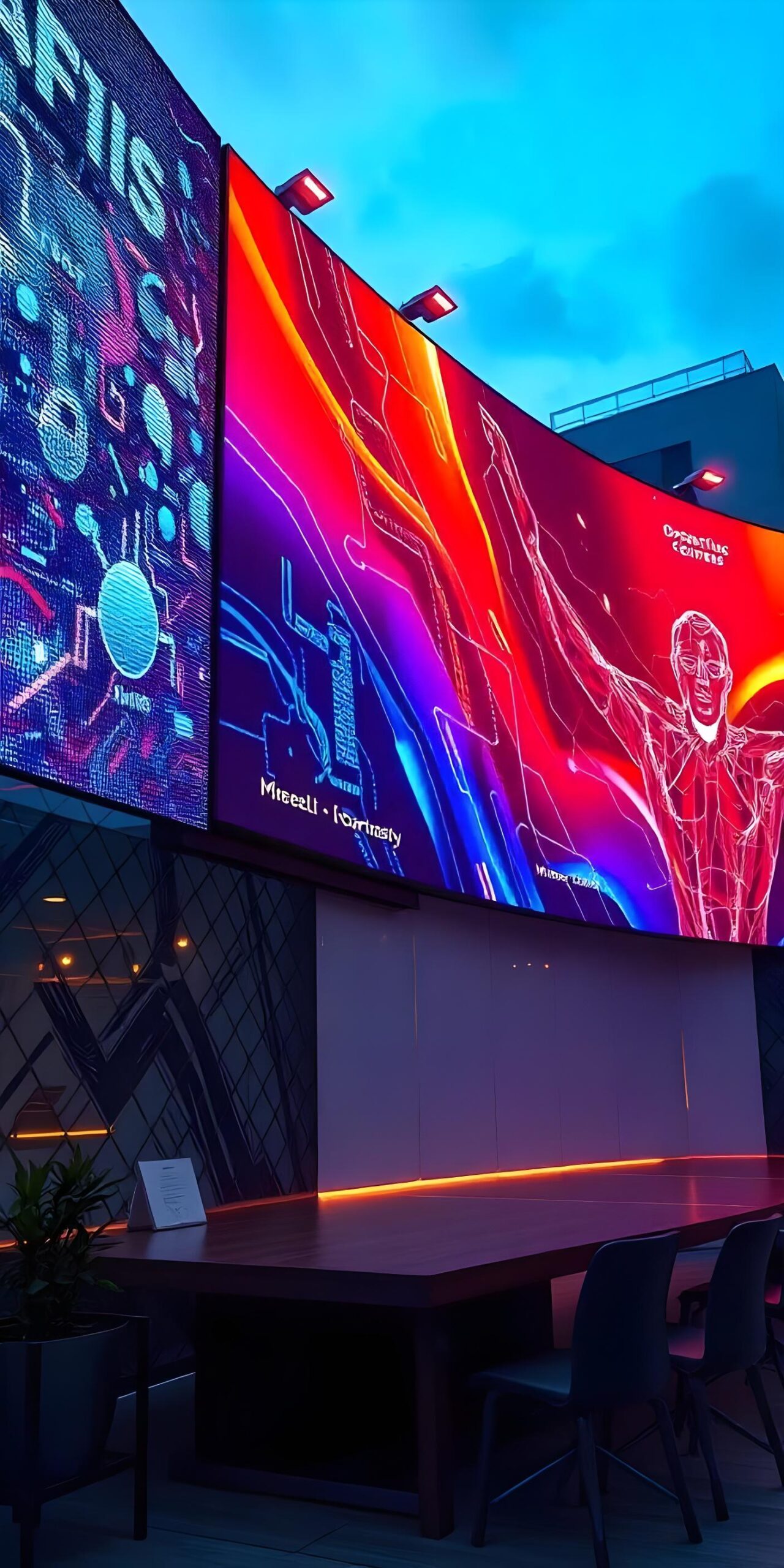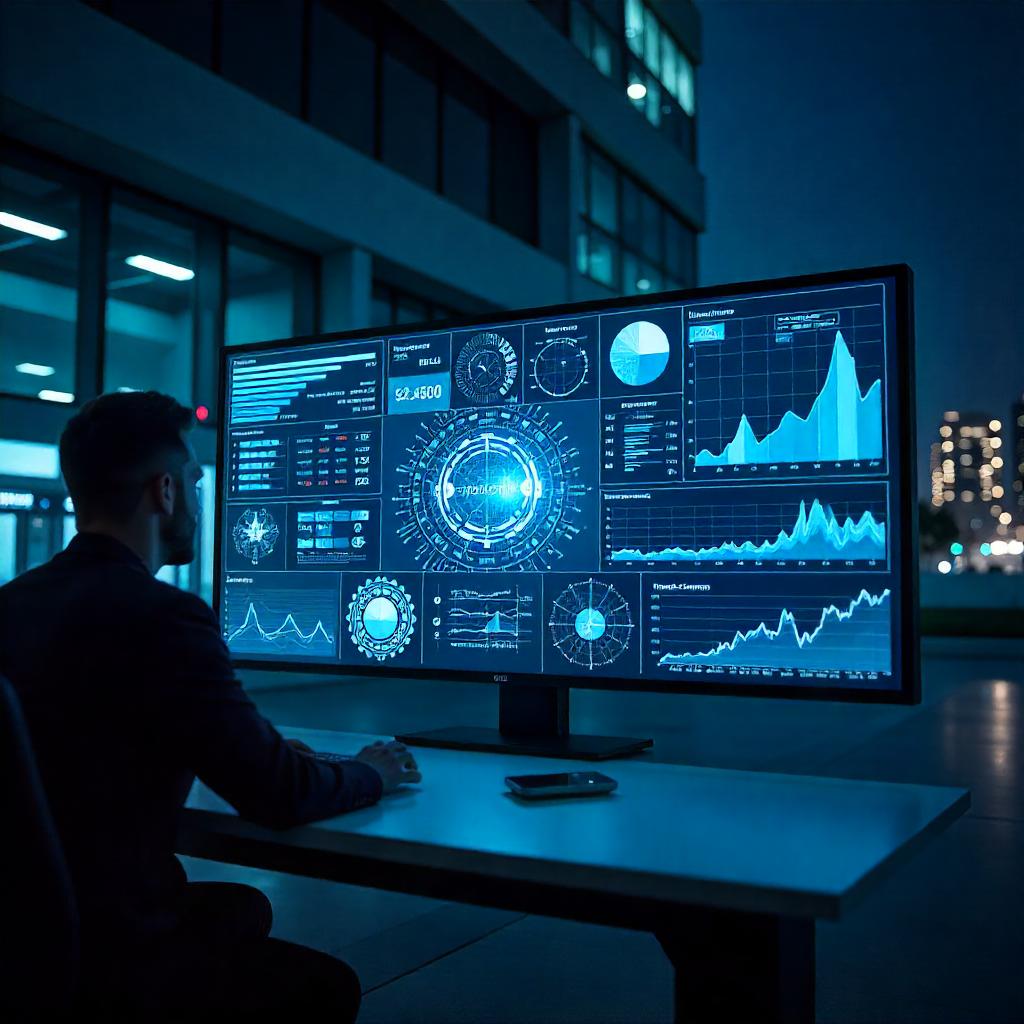- Home
- About Us
- Industries
- Agritech & Smart Farming
- Aquariums & Zoos
- Art & Cultural Exhibitions
- Automotive & Transportation
- Broadcasting & News
- Construction & Real Estate
- Corporate & Offices
- Cultural Heritage & Preservation
- Cybersecurity Operations
- Digital Content Creation & Media
- E-commerce & Online Retail
- Education
- Energy & Utilities
- Entertainment & Media
- Entertainment Arcades & Amusement
- Environmental Monitoring
- Event Management & Conferences
- Fashion & Apparel Retail
- Fashion Retail & E-commerce
- Finance & Banking
- Financial Trading & Stock Exchanges
- Fitness & Wellness
- Food & Beverage
- Food Processing & Manufacturing
- Gaming, Casinos, & Hospitality
- Government & Public Spaces
- Healthcare
- Hospitality & Event Venues
- Insurance
- Legal & Judicial
- Libraries & Community Centers
- Logistics & Supply Chain
- Luxury Cruise & Maritime
- Manufacturing & Industrial
- Meteorology & Climate Research
- Military & Defense
- Mining & Extraction
- Museums & Cultural Centers
- Non-Profit Organizations
- Oil & Gas Industry
- Professional Training & Development
- Public Health & Awareness
- Public Parks & Recreation Areas
- Public Safety & Law Enforcement
- Public Transportation
- Rehabilitation Centers
- Religious & Worship Spaces
- Renewable Energy
- Retail & Shopping Malls
- Retail Banking
- Security & Surveillance
- Social Media & Digital Marketing
- Sports & Stadiums
- Smart Cities & Urban Planning
- Supply Chain & Inventory
- Television & Film Production
- Travel & Hospitality
- FAQ
- Contact Us
- Home
- About Us
- Industries
- Agritech & Smart Farming
- Aquariums & Zoos
- Art & Cultural Exhibitions
- Automotive & Transportation
- Broadcasting & News
- Construction & Real Estate
- Corporate & Offices
- Cultural Heritage & Preservation
- Cybersecurity Operations
- Digital Content Creation & Media
- E-commerce & Online Retail
- Education
- Energy & Utilities
- Entertainment & Media
- Entertainment Arcades & Amusement
- Environmental Monitoring
- Event Management & Conferences
- Fashion & Apparel Retail
- Fashion Retail & E-commerce
- Finance & Banking
- Financial Trading & Stock Exchanges
- Fitness & Wellness
- Food & Beverage
- Food Processing & Manufacturing
- Gaming, Casinos, & Hospitality
- Government & Public Spaces
- Healthcare
- Hospitality & Event Venues
- Insurance
- Legal & Judicial
- Libraries & Community Centers
- Logistics & Supply Chain
- Luxury Cruise & Maritime
- Manufacturing & Industrial
- Meteorology & Climate Research
- Military & Defense
- Mining & Extraction
- Museums & Cultural Centers
- Non-Profit Organizations
- Oil & Gas Industry
- Professional Training & Development
- Public Health & Awareness
- Public Parks & Recreation Areas
- Public Safety & Law Enforcement
- Public Transportation
- Rehabilitation Centers
- Religious & Worship Spaces
- Renewable Energy
- Retail & Shopping Malls
- Retail Banking
- Security & Surveillance
- Social Media & Digital Marketing
- Sports & Stadiums
- Smart Cities & Urban Planning
- Supply Chain & Inventory
- Television & Film Production
- Travel & Hospitality
- FAQ
- Contact Us

Cybersecurity Operations

Uses Of Led Display For Cybersecurity Operations
In a cybersecurity operations center (SOC), real-time monitoring and rapid response to potential security threats are paramount. Active LED displays are becoming an indispensable tool in these environments, providing enhanced visibility of critical information, fostering collaboration, and enabling faster decision-making. These displays offer SOC teams an effective way to monitor data feeds, visualizations, and alerts on a large scale, improving overall situational awareness and reducing response times to cyber incidents.
Benefits of Active LED Displays in Cybersecurity Operations Centers
- Real-Time Threat Monitoring:
Active LED displays allow SOC teams to monitor network traffic, security alerts, and threat intelligence in real-time. By displaying up-to-date information on large, easily visible screens, these displays ensure that security analysts are always aware of potential vulnerabilities and cyber threats. - Enhanced Data Visualization:
LED displays can visualize complex data, including network activity, security events, and incident response workflows. This makes it easier for SOC teams to identify trends, patterns, and anomalies that could indicate potential security breaches or other vulnerabilities. - Centralized Monitoring:
Active LED displays can centralize information from multiple sources, including security monitoring tools, threat detection systems, and external feeds. By consolidating this information onto a single screen or a multi-screen setup, teams can track various security metrics at a glance without needing to switch between different systems. - Improved Collaboration and Decision-Making:
SOC teams often work in high-pressure environments where collaboration and rapid decision-making are crucial. By displaying critical information on large screens, teams can more effectively collaborate on incident response, share insights, and quickly devise strategies to address potential threats. - Incident Tracking and Management:
LED displays can be used to show the status of ongoing incidents, including response progress, affected systems, and mitigation steps. This ensures that all team members are aligned and can respond to cyber threats efficiently.
Applications of Active LED Displays in Cybersecurity Operations Centers
- Threat Intelligence Dashboards
Purpose: To display live threat intelligence data and provide situational awareness.
Content Ideas:
- Real-Time Threat Feeds: Display global and local cybersecurity threats, including emerging vulnerabilities, active exploits, and cyberattacks.
- Geographical Visualizations: Use maps to track the geographical locations of cyberattacks, highlighting regions under threat and aiding in prioritization.
- Incident Severity Levels: Show severity levels of ongoing incidents, enabling SOC teams to prioritize their responses and resources effectively.
- Security Event Monitoring
Purpose: To track and visualize network and system activity in real-time.
Content Ideas:
- Network Traffic Analysis: Visualize network traffic and highlight unusual spikes or suspicious behavior that may indicate a security breach.
- User Activity Monitoring: Display user activity logs and unauthorized access attempts, helping security analysts quickly identify potential insider threats or compromised accounts.
- Malware Detection: Visualize malware detection systems, showing real-time updates of infected devices and affected endpoints.
- Incident Response Coordination
Purpose: To monitor the status and progress of cybersecurity incidents and response efforts.
Content Ideas:
- Incident Status Updates: Display a real-time incident tracking system that shows the status of ongoing cybersecurity events, including mitigation efforts and recovery plans.
- Team Collaboration: Show team assignments and workflows for incident response, ensuring efficient collaboration and rapid action.
- Root Cause Analysis: Use visualizations to track the root cause of a security incident and its impact on the organization, helping analysts prioritize mitigation steps.
- Key Performance Indicators (KPIs) and Metrics
Purpose: To display performance data related to the effectiveness of the SOC and its response capabilities.
Content Ideas:
- Response Time Metrics: Track and display response times for various types of security incidents, including detection, containment, and resolution times.
- Threat Detection Rates: Visualize the number of threats detected, false positives, and successful mitigations over time to assess the efficiency of security systems.
- Resource Utilization: Monitor the workload of SOC team members, highlighting areas of high demand or insufficient coverage.
- Vulnerability Management
Purpose: To display information on system vulnerabilities and patching efforts.
Content Ideas:
- Vulnerability Assessment: Visualize known vulnerabilities across the network, along with patching statuses and timelines for remediation.
- Risk Levels: Display risk levels associated with different vulnerabilities to help SOC teams prioritize patching efforts based on potential impact.
- System Health: Provide a dashboard showing the overall health of the organization’s IT infrastructure, with a focus on systems that need immediate attention.
- Compliance Monitoring
Purpose: To ensure compliance with cybersecurity regulations and standards.
Content Ideas:
- Audit Logs: Display audit logs to track compliance with security policies and regulations, ensuring that all actions are properly documented and traceable.
- Compliance Scorecards: Visualize compliance status with regulatory frameworks, such as GDPR, HIPAA, and PCI-DSS, to ensure that the organization meets required standards.
- Policy Violations: Highlight violations of security policies and regulations in real-time, allowing for immediate corrective action.
- Cybersecurity Awareness and Training
Purpose: To promote awareness and training within the SOC team and the wider organization.
Content Ideas:
- Cybersecurity Alerts: Display real-time cybersecurity alerts and lessons learned from recent incidents to educate team members on evolving threats.
- Security Best Practices: Use displays to remind team members of key security protocols, tips for reducing human error, and best practices for protecting sensitive data.
- Training Progress: Track the progress of training programs for SOC staff, ensuring that team members are up-to-date with the latest threat intelligence and response strategies.
- External Collaboration and Stakeholder Communication
Purpose: To keep external stakeholders informed about security incidents and responses.
Content Ideas:
- Incident Reporting: Display updates on security incidents to external partners, customers, or executive teams, ensuring that they are kept informed of the organization’s cybersecurity status.
- Executive Dashboards: Provide executive teams with a high-level view of ongoing incidents, security posture, and resource allocation, helping them make informed strategic decisions.
Features
- List Item
- List Item
- List Item
- List Item
Advantages
- List Item
- List Item
- List Item
- List Item

Placement Tips for LED Displays in Cybersecurity Operations Centers
- Centralized Location: Place large active LED displays in a centralized location, such as the SOC’s main control room or war room, where all team members can easily monitor critical data.
- Multiple Displays: Use multiple screens or wall-mounted LED arrays to show different types of information simultaneously, such as real-time threat data, incident status, and KPIs.
- Strategic Angles: Ensure that displays are placed at eye level or in locations where analysts can quickly glance at information without breaking their focus from other tasks.
- Emergency Visibility: In case of critical incidents, ensure that certain key displays are easily visible to the entire team, facilitating swift coordination and action.
Conclusion
Active LED displays play a critical role in cybersecurity operations centers by enhancing monitoring, facilitating collaboration, and improving the speed and accuracy of responses to cyber threats. These displays offer dynamic, real-time visualizations of security data, empowering SOC teams to stay on top of threats and respond more efficiently. With applications ranging from incident tracking to compliance monitoring, LED displays help ensure that SOC teams can manage complex cybersecurity challenges effectively and proactively. By integrating active LED displays into their operations, cybersecurity teams can bolster their defenses, improve situational awareness, and safeguard sensitive information more effectively.

illuminits LED Walls?
Technology
There are three primary LED video wall technologies: ultra-narrow bezel LCD, rear-projection cubes, and direct-view LED displays. Ultra-narrow bezel LCD is the most cost-effective option.
Size
The great thing about illuminits video walls is that they are modular, so you can get them in any size or aspect ratio you want.
Support
The heavier the video wall system becomes, the more panels there are. This puts additional strain on the infrastructure that supports it. illuinits offers the best in-time assistance.
Service
Even high-definition video walls can have problems. This can be a minor or major issue. As a result, Aero provides a variety of comprehensive service packages that ensure minimal downtime at a low cost. Types Of LED Displays



